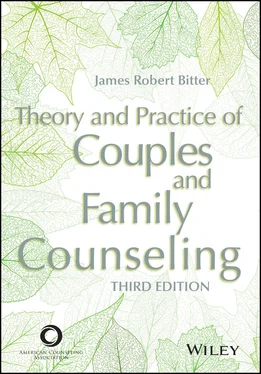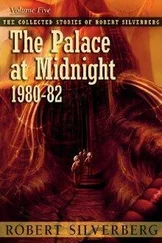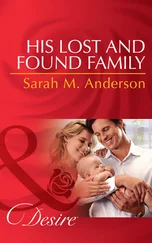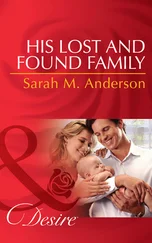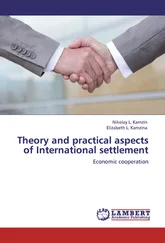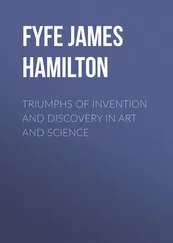James Robert Bitter - Theory and Practice of Couples and Family Counseling
Здесь есть возможность читать онлайн «James Robert Bitter - Theory and Practice of Couples and Family Counseling» — ознакомительный отрывок электронной книги совершенно бесплатно, а после прочтения отрывка купить полную версию. В некоторых случаях можно слушать аудио, скачать через торрент в формате fb2 и присутствует краткое содержание. Жанр: unrecognised, на английском языке. Описание произведения, (предисловие) а так же отзывы посетителей доступны на портале библиотеки ЛибКат.
- Название:Theory and Practice of Couples and Family Counseling
- Автор:
- Жанр:
- Год:неизвестен
- ISBN:нет данных
- Рейтинг книги:5 / 5. Голосов: 1
-
Избранное:Добавить в избранное
- Отзывы:
-
Ваша оценка:
- 100
- 1
- 2
- 3
- 4
- 5
Theory and Practice of Couples and Family Counseling: краткое содержание, описание и аннотация
Предлагаем к чтению аннотацию, описание, краткое содержание или предисловие (зависит от того, что написал сам автор книги «Theory and Practice of Couples and Family Counseling»). Если вы не нашли необходимую информацию о книге — напишите в комментариях, мы постараемся отыскать её.
Theory and Practice of Couples and Family Counseling — читать онлайн ознакомительный отрывок
Ниже представлен текст книги, разбитый по страницам. Система сохранения места последней прочитанной страницы, позволяет с удобством читать онлайн бесплатно книгу «Theory and Practice of Couples and Family Counseling», без необходимости каждый раз заново искать на чём Вы остановились. Поставьте закладку, и сможете в любой момент перейти на страницу, на которой закончили чтение.
Интервал:
Закладка:
What parts of each individual are used or ignored in the way people cope? Given the family dynamics, what purpose might individuals have for behaving and interacting the way they do?
How do cultural and gender issues affect your understanding of the family, its members, and the ways in which the practitioner intervenes in family process?
What goals are established for counseling, and which skills, techniques, and interventions are used in the service of those goals?
How would you proceed if you were working with the Quest family within the various models presented?
How would you evaluate the process and success of your therapeutic interventions?
These questions invite you to think about the Quest family and other demonstrations of the models from many different perspectives. Each perspective is like a different pair of glasses with different sets of lenses. What do you see if you actively choose to look at the family differently? Of course, no amount of thinking about a family or even watching the masters at work can substitute for actual practice under supervision. If you are not already engaged in seeing families, that will happen soon. During this first exploratory stage, however, I urge you to let your mind and heart become engaged with the ideas and processes of family counseling. Imagination can be the start of actualization: Visualizing yourself in action is great preparation for your first counseling sessions with families.
Examining the various approaches to working with the Quest family will allow you to compare and contrast different stances in relation to family practice. It will also give you a chance to decide which aspects of family practice fit for you and which parts seem foreign or unacceptable to you. I would urge you to continually consider how you might plan to integrate the approaches you like into a coherent whole.
Below I present the story of the Quest family, which is constant for all couples and family counseling models in this book. When you finish reading about the Quest family, ask yourself whether you think the family is functional or dysfunctional, healthy or unhealthy, in need of minor adjustment or a major restructuring. What do the answers to these questions say about your initial approach to and contact with the family? Then allow yourself to ask different kinds of questions: What are you curious about? What do you want to know next? What metaphor comes to your mind about providing counseling for this family? Do the considerations of curiosity and metaphor lead to different perspectives than the questions about functionality? Welcome to the journey.
Biography of the Quest Family
Paul and Jane Quest have been married for 20 years when the family comes to counseling. They were married on her birthday in 1985. Paul often jokes that he married her on her birthday to keep down the number of presents he has to buy each year, but in fact he always gets her very nice gifts—and gets them often. He also works hard to keep Jane’s birthday celebration with the family and their anniversary remembrances separate.
Paul’s father, James, came from a fairly well-to-do Boston family, described by him as WASPy (White, Anglo-Saxon, and Protestant). Paul’s mother, Karen, was from a poorer working-class Irish family. James did not marry until he was in his late 30s. He had always wanted to be a surgeon and although he had dated—occasionally even seriously—he was dedicated primarily to his work and his specialty in oncology. He met Karen, who was a new surgical nurse, when he was 35 years old. She was 23 years old, 12 years younger, but she was, with her soft red hair and almost crystal green eyes, the most beautiful woman he had ever seen. She was the daughter of an Irish beat cop and the only person in her family to ever finish college. She had a bachelor’s in nursing from Boston College. They were married in 1958, after 2 years of courtship. James converted to Catholicism to marry Karen, and he promised to raise his children in the Catholic Church and send them to Catholic schools.
Paul was born 2 years later, in 1960, and he was named after James’s father. He was a bright, beautiful baby boy, 7 pounds, 3 ounces, 21 inches long. Karen stopped working outside of the home to raise their son, a decision that James fully supported. Two years later, Karen was pregnant again but miscarried in her fourth month. Karen was certain that the miscarried child had been a little girl, whom she called Katherine to herself. They were never able to have another child, which Karen called “God’s will.” Paul was therefore a pampered and somewhat spoiled child.
Still, Paul did very well in school, and from an early age he wanted to follow in his father’s footsteps. He was interested in everything his father did, and he loved being at the hospital. By the time he was 10 years old, he had already observed one of his father’s surgeries and knew that was what he would do when he finished college.
Jane’s father, Joseph, was the eldest son and first grandson of Boston police officers. He knew from the time he was a young child that he too would be a police officer in Boston one day. Jane’s mother, Amy, was the eldest daughter of a Boston beat cop, and Joseph seemed to be a man “just like her father.” Both families were Irish and Catholic. Joseph and Amy met in high school but waited to marry until he finished the police academy and was on the job. They dated for more than 5 years, and both Joseph and Amy took pride in the fact that she was still a virgin on her wedding night. Amy was pregnant almost immediately, and their first child, Laura, named for Amy’s grandmother, was born a year later.
Although both Joseph and Amy wanted a large family, it took almost 4 years for Amy to get pregnant again. She blamed it on the stress of Joseph’s job, her worry for him, and the long hours that he put in. Still, in 1960, Amy gave birth to her son, named after his father and called Joey by everyone in the family. Amy’s devotion to her son was endless, and Laura, the daughter, soon felt that she was on her own. She became very independent and very close to her grandmothers. Two years later, Jane was born.
Jane would turn out to be the star of the family: She was good at school, she was cute and charming, she had a flair for acting, she loved animals, she was an artist, she played the violin, and she seemed to bring energy and fun to almost everything she did. She would eventually graduate magna cum laude from Boston College on scholarship with a degree in psychology.
Jane’s older sister, Laura, however, had a rough period during her late teens and young adulthood. She felt distant from her father and mother and, in any case, did not like police officers or anything about them. She had gotten pregnant in high school and arranged for an abortion without her parents’ consent. After high school, she moved out. She worked as a salesperson at Filene’s, a department store in Boston, and was a friend with almost anyone her parents would not like. When she was 24, Laura married a construction worker outside of the church. His name was John Westin, and he was a good-time boy. He drank a lot and was in almost constant verbal fights with Laura’s father, who considered him “scum.” When he hit Laura in a drunken rage, Joseph beat him to within an inch of his life and then put him in jail. John and Laura were divorced in 1984—with her father’s blessing. She began to get along with her father much better after that.
Joey, Jane’s only brother, was much loved by his mother but seemed almost incapable of doing anything for himself. He was still living at home in his early 30s, and his mother cooked for him and cleaned his clothes. She liked having two men around the house. Although Joey did not join the police force, his father did manage to get him a job with the city for a while. Joey later passed a civil service examination, got on the list, and went to work for the post office. He never married.
Читать дальшеИнтервал:
Закладка:
Похожие книги на «Theory and Practice of Couples and Family Counseling»
Представляем Вашему вниманию похожие книги на «Theory and Practice of Couples and Family Counseling» списком для выбора. Мы отобрали схожую по названию и смыслу литературу в надежде предоставить читателям больше вариантов отыскать новые, интересные, ещё непрочитанные произведения.
Обсуждение, отзывы о книге «Theory and Practice of Couples and Family Counseling» и просто собственные мнения читателей. Оставьте ваши комментарии, напишите, что Вы думаете о произведении, его смысле или главных героях. Укажите что конкретно понравилось, а что нет, и почему Вы так считаете.
